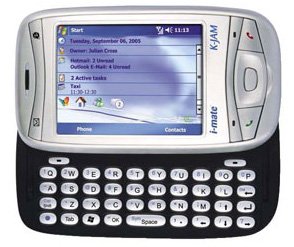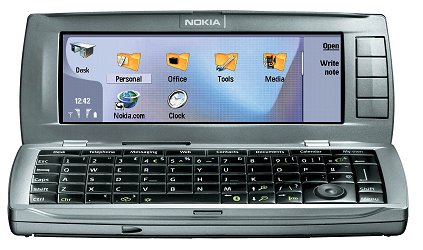It goes without saying that if you're using your smartphone all the time, whatever the make and whatever the underlying operating system, you're going to need to recharge it once a day - at least. But what if you're travelling a lot and recharging isn't easy? Or what if you're the forgetful sort (naming no names) who simply keeps forgetting to charge his or her phone until a few minutes before it's needed? This is where a particular statistic comes into play - one that reviewers like me rarely take notice of when establishing opinions on the latest cutting edge devices - 'Stand-by time'.
Stand-by time is the length of time the device could last, logged onto your phone network but with the screen blanked and with no actual useage, before a fully charged battery ran out and the smartphone would no longer turn on. And it's a statistic that could make all the difference if you're forced to go without that daily recharge from a convenient mains socket. While being used, a device using any OS will use a roughly comparable amount of battery current, with processor, screen and assorted comms technologies all being used. But in between these bursts of activity, it'd be nice to not have significant battery power leaking away through keeping the OS alive.


In fact, this article only occurred to me because I'd been testing the i-Mate K-JAM, a Windows Mobile 5 keyboarded (but 320 by 240 screen and otherwise pretty typical Pocket PC/communicator. In use, the device is impressive and offers a form factor unmatched by anything except perhaps the new Nokia E61. Applications run pretty fast, the multitasking works and the third party software catalogue is second to none. And battery life, within a 24 hour period, is perfectly acceptable. But having Windows Mobile gently chugging away in the background, even when apparently turned 'off', means that medium term battery life is significantly worse than I'd ever seen with my Symbian OS-powered handhelds.
But I wanted to test this phenomenon properly, so I fully charged the K-JAM, disabled all comms (Wi-Fi, Bluetooth, etc.), made sure the phone section was logged onto the network (Vodafone) turned the screen off and left it. I did the same with my Nokia 9500, a broadly similar device in terms of size and scope, powered by Symbian OS 8. In each case, I monitored the reported battery level every day:
| K-JAM (Windows Mobile 5) | Nokia 9500 (Symbian OS 8) | |
| After 12 hours | 94% | 7 bars (out of 7) |
| After 24 hours | 78% | 7 bars |
| After 36 hours | 72% | 7 bars |
| After 48 hours (2 days) | 62% | 7 bars |
| After 72 hours (3 days) | 50% | 7 bars |
| After 96 hours (4 days) | 40% | 7 bars |
| After 120 hours (5 days) | 15% | 6 bars (phew, a change at last!) |
The first thing to draw from this table is that the standby time of the Windows Mobile 5 smartphone isn't that bad. Unless under extreme conditions (such as on an outdoor trip), you could probably do without a single daily charge and get away with it. After 2 or 3 days, though, even using the device sparingly, you'd be starting to run on empty. However, by comparison, the Nokia's OS and battery efficiency is astounding. For the battery to still be closer to full than to empty after 5 days of 'on' time is very impressive. (As some people have commented, the 'bar' system on Nokia devices isn't strictly linear, but even allowing for this, there's still a point to be made here)
The difference almost certainly isn't in the hardware, as Psion and Sony Ericsson hardware (to name but two) also show the same efficiency. The difference is in the operating system itself and the demands (or lack of them, when appropriate) it makes on the hardware. Symbian OS (nee EPOC on the Psion Series 3 and then Series 5, back in the mid 1990s) has always been rightly famed for its power efficiency, with (in extreme cases) a Psion palmtop running for 2 months on a single pair of AA batteries. Modern communicators, of course, have far greater demands placed on them (colour screen, radios, etc.), but still, in extreme circumstances, you could probably leave a Symbian OS smartphone alone for over a week and you'd be able to make a phone call and write a short document at the end of it.
Now, as I say, this sort of drastic battery test probably isn't directly relevant to the way you and I use our smartphones, of whatever marque. And it shouldn't be taken as a primary consideration when buying, the K-JAM has lots of other advantages over the 9500 in my example. But at the very least, take this as a real world observation on differences in power frugality between the two leading mobile operating systems. And, should you often venture beyond the realms of mains power for any length of time, these differences may play a factor in your choice of platform.
